Francesca Leonardi vive a Roma ed è rappresentata dall’agenzia Contrasto. Dopo gli studi in psicologia approda alla fotografia negli USA, dove studia (South Florida Art Center di Miami e all’International Center of Photography di New York ) e lavora nel settore fotografico e cinematografico. Una parte importante del suo lavoro è dedicata all'Egitto, in particolare al periodo delle rivoluzioni e rivolte che hanno cambiato radicalmente il Paese. I suoi progetti hanno ricevuto numerosi premi e diffusione internazionale, e nel 2009 riceve dalla Fondazione L.A.F. di Praga l'incarico di documentare il ventesimo anniversario di democrazia della Repubblica Ceca. L'abbiamo intervistata, chidendole del suo lavoro e della sua visione della fotografia.
Guardando ai diversi lavori che hai realizzato, molti riguardano lʼEgitto, al punto che nel loro insieme rappresentano un affresco del paese in uno specifico arco temporale (2010-2012, se non sbagliamo). Ci puoi raccontare da dove nasce questo interesse?
L’interesse per l’Egitto è nato nel 2011. Durante i giorni della rivoluzione, nel mese di Gennaio, mi sono sentita con un caro amico e bravo collega di agenzia per scendere assieme al Il Cairo. Una serie di episodi di espulsioni di giornalisti ci hanno fatto poi desistere. Dal quel momento ho iniziato a sentire inevitabilmente la necessità di vedere quella piazza che sembrava essere davvero al centro del mondo e vivere quello che sembrava il processo di nascita di una nuova democrazia. Nell’Aprile dello stesso anno ho deciso quindi di partire per Il Cairo, dove sono tornata ripetutamente nell’arco di un anno e mezzo.
Che cosa hai voluto guardare, e farci guardare, di questo paese?
La fotografia è per me uno strumento di ricerca e comprensione, i lavori fotografici sono delle tappe di questo processo. Ho iniziato il percorso in Egitto avvicinandomi alle persone che stavano vivendo questa fase di cambiamento e, per la prima volta nella loro vita, anche un coinvolgimento politico. Ho chiesto a loro di mostrarmi la loro città, da cui avevano perso il senso di appartenenza, così ho aggiunto dei tasselli alla mia comprensione di un paese tanto complesso. Ho cercato di mostrare il contrasto tra la vitalità, la forza di cambiamento di questi abitanti e lo stato di abbandono, a causa dell’incuria dello Stato, in cui versa da molti anni una delle città più belle al mondo.
Come costruisci i tuoi lavori da un punto di vista progettuale e operativo?
In termini di progettualità prima di partire per un viaggio, organizzo tutti i contatti che penso mi possano essere utili nella città dove mi dirigo, focalizzo i punti che credo siano necessari per raccontare la storia che vorrei raccontare, leggo molti articoli (soprattutto di testate estere!) e libri che possano darmi informazioni pratiche o punti di vista interessanti del soggetto. In genere lascio abbastanza libertà all’esperienza del momento, evitando di pre concentualizzare eccessivamente.
In “Egypt” sembra che tu sia stata ai margini dei luoghi che tradizionalmente corrispondono a certi stereotipi. È così? E che reazioni hai avuto su questi lavori in terre egiziane?
È sempre molto interessante vedere il proprio lavoro con gli occhi esterni di un’altra persona… Penso al margine come una linea immaginaria tutt’intorno a una data scena: estremità, contorno, confine. Sì, i margini sono luoghi dove trovo piacere a stare, perché mi permettono di osservare da una certa distanza da dove senti che la tua presenza non ha una così grande influenza sullo svolgimento della realtà, in più spesso riflette il mio stadio di conoscenza del luogo e delle persone che ho fotografato, significa che più vicino non mi era concesso andare.
In “Revolutionary People. Far from Tahrir” il paesaggio che fa da sfondo sembra non cambiare rispetto al lavoro “Egypt”. Stesso sfondo, storie diverse. Cʼè una volontà in questa apparente similitudine?
Il lavoro "Egypt" nasce contemporaneamente al lavoro “Revolutionary people”, forse per questo li senti molto affini. I luoghi sono gli stessi: due paesi rurali a un centinaio di km da Il Cairo attorniati da centinaia di industrie di cemento. Ero lì per lo svolgimento di un progetto, divenuto poi un libro, in collaborazione con Cospe e Zona. La prima una Ong italiana, la seconda un’associazione che promuove progetti speciali di cui faccio parte assieme ad altri fotografi. I soggetti, per quanto diversi, sono legati dal rapporto che hanno con il diverso scorrere del tempo fuori dalla grande metropoli de Il Cairo e dalle rigide regole vigenti in special modo nelle piccole comunità dettate dalla religione islamica. Motivo per il quale non abbiamo potuto mostrare il libro ai suoi protagonisti. Il libro non è mai arrivato all’interno delle case che racconta, purtroppo. In particolar modo le donne che ci hanno concesso di varcare la soglia della loro dimora ci avevano da subito avvertito che, nonostante il loro forte desiderio e necessità di raccontare le proprie rotture con la tradizione e le usanze vigenti, non avrebbero potuto divulgarle nei propri villaggi. Pena la discriminazione sociale.
Cʼè una caratteristica che si ritrova spesso nei tuoi lavori e che ad esempio in “Bed dreams” é evidente e riguarda la messa in campo di una “leggera distanza” che ti permette di descrivere la scena. Lʼabbiamo spesso ritrovata, anche se non sempre, e vorremmo sapere se è una tua caratteristica, che ricerchi come parte di un tua estetica.
Nel cercare di rispondere ai quesiti che mi pongo ho spesso bisogno di includere molti elementi in una scena per mostrarne l’articolazione, la complessità. È questo il motivo per cui alle volte ho bisogno di fare qualche passo indietro. Per me significa sempre stare dentro la scena, ma con lo spazio necessario per apprezzarla e capirla.
In lavori come “Claudia” e “Bobak Family” il registro invece cambia, ci porti dentro la storia e vicino ai soggetti e cambia anche il modo di inquadrare, dimostrando rispetto ai lavori precedentemente indicati una variabilità stilistica. Ci puoi dire se è un tratto del tuo approccio alla fotografia?
Sì, il viaggio all’interno dell’universo personale di un’altra persona è una delle possibilità che più mi affascina della fotografia. Il rapporto che, attraverso mesi o anni (per esempio, conosco e fotografo Claudia da 4 anni ormai) di conoscenza, traspare dalle immagini e costruisce il racconto delle scelte che ci differenzia. Ho letto una volta un’intervista della fotografa americana Annie Leibovitz in cui diceva “...la macchina fotografica era anche un buon pretesto per essere lì”... ecco, per me è spesso così.
Quali sono le tue influenze estetiche e di approccio alla costruzione della fotografia?
Ho iniziato nella fotografia a 23 anni come assistente nel campo del ritratto e nella moda a New York dove ho conosciuto e lavorato con grandi fotografi come Irving Penn che credo ancora sia uno dei più grandi fotografi di ritratti della storia della fotografia. Non ho dei riferimenti estetici fissi e sempre uguali, e soprattutto non solo fotografici: amo molto la ricerca di Diane Arbus, l’introspezione di Frida Khalo, i paesaggi di Stephen Shore, l’analisi della complessità umana di Dostoevskij, l’amore e la morte di Sally Mann.
In “Clashes in Tahrir Square”, come anche in “Cairo demonstration” e in “Cairo protest”, troviamo in modo più evidente uno dei tratti della tua fotografia. Che si colloca non nel centro degli eventi (e intendiamo la rappresentazione che i media ne danno spesso, cioè dei veri e propri scontri) ma ai suoi bordi, sebbene sia evidenti che tu fossi lì durante gli scontri: la preparazione delle barricate, la cura dei feriti, la preghiera e altro ancora. Sintomatica è una foto di un ragazzo che appoggiato al parapetto del balcone guarda giù, presumibilmente dove ci sono le persone che sfilano in corteo.
Durante una serie di scontri avvenuti nel Novembre del 2011, pochi giorni prima di quelle che sarebbero state le prime elezioni parlamentari libere del paese, sono stata aggredita e derubata della macchina fotografica dalla polizia egiziana. Eravamo io e un’amica fotografa, Lavinia Parlamenti, nei pressi di piazza Tahrir. È stata un’esperienza che mi ha particolarmente segnato e fatto riflettere molto sul mio interesse e ruolo all’interno di un conflitto. Perché mi ero spinta tanto avanti? In qualche modo avevo deciso di rischiare per raccontare un volto della piazza meno noto che era quello dietro e non davanti le barricate. Perché quest’urgenza di essere in mezzo agli scontri, quando non avevo neanche la giusta esperienza per sapere come comportarmi? Ora che avevo perso il pretesto (ovvero la macchina fotografica) ho avuto il modo di sondare le mie motivazioni più a fondo. La paura, l’insicurezza, l’adrenalina, non erano reazioni che riuscivano a stimolarmi, al contrario mi bloccavano. In fondo non stavo mostrando al mondo nessuna immagine esclusiva, la piazza era stracolma di fotografi con molta più esperienza di me che sarebbero riusciti a fare un lavoro migliore. Ho cercato quindi una dimensione dove avrei potuto costruire lo spazio necessario per sentire e ascoltare. Mi sono riposizionata li dove amo osservare, ai margini!
In “Egypt” cʼè una foto dove viene ripreso da qualche metro il gruppetto di persone che sta ascoltando lʼintervista di un attivista politico e si vede lʼinsieme di questa situazione che noi spesso in televisione vediamo invece dall'interno. Qui lʼapproccio “distante” assume i caratteri di un commento sulla rappresentazione che i media danno spesso di questo tipo di micro evento. Cosa ci dici?
Nell'Aprile 2011, durante la mia prima visita a Il Cairo, scendevo in Piazza Tahrir ogni giorno, e ogni giorno nel quale percorrevo quella circonferenza di circa 300 mt da un lato all’altro della piazza riuscivo a scorgere una scena nuova e divertente che catturava la mia curiosità: una piccola troupe televisiva che intervistava uno alla volta le persone che vi si affollavano attorno, un avvocato sopra una cassetta di frutta che dava un piccolo comizio dispensando consigli legali, un rapper con una cassa acustica sotto i piedi e un microfono in mano che raccontava la gioia dei giorni della rivoluzione. Ogni settimana nasceva una nuova emittente tv che si popolava di personaggi insoliti e bizzarri. In quel particolare momento storico ho avuto l’impressione che il paese avesse la necessità ossessiva di rappresentare se stesso, asserire che un cambiamento stava avvenendo. Credo sia stato guidato dal bisogno di affermazione individuale negato fino a quel momento. Era un dimostrazione che quella che avevano raggiunto era una forma di libertà, di democrazia. Ho trovato molto stimolante documentare questo processo. Purtroppo a distanza di tre anni sembra che il governo attuale voglia spazzarlo violentemente via dalla memoria collettiva.
E qual è la reazione dei media a questo tipo di fotografie, nella tua esperienza?
I media sono ben consapevoli delle proprie contraddizioni e la rappresentazione strumentale che danno degli eventi ma anche della propria necessità di esistere nella definizione di una processo storico.
Veniamo al tuo lavoro sui Fratelli Musulmani. Nelle foto cʼè molta prossimità con i soggetti. Come sei stata accettata in quando donna? La domanda, lo sappiamo, rischia di essere mal posta, sommersa dagli stereotipi che abbiamo sulla fratellanza musulmana, ma te la facciamo comunque.
Uno dei miei primi interessi in Egitto é stato appunto rivolto ai Fratelli Musulmani. Ero abbastanza consapevole dei limiti che, come donna e per giunta occidentale, avrei avuto nell’avvicinarmici, ma sapevo anche che quello era un momento a loro molto favorevole, in cui avevano bisogno della massima esposizione possibile per raccogliere il maggior numero di consensi per le sucessive elezioni. Hanno quindi controllato attentamente il mio operato, permettendomi di entrare solo ad eventi pubblici dove avrebbero avuto tutto il controllo della situazione. Non potevo che stare al loro gioco.
Verso il mondo della donna musulmana hai unʼattenzione particolare e ne hai dato, nei vari servizi fotografici, una restituzione articolata e sfaccettata. Dalle sorelle musulmane alle ragazze delle proteste in piazza, sino alle giovani musulmane che vivono e crescono in Italia come ad esempio in “Islamic youth in Italy”. Ci puoi raccontare cosa ti interessa restituire?
Il mondo della donna musulmana e la questione del velo sono temi che mi interessano da molti anni. Nel 2010 con “Islamic Youth in Italy” ho iniziato ad indagare la questione della doppia identità culturale, come una ragazza musulmana nata o giunta in Italia molto piccola, per influenza (alle volte coercitiva) famigliare arrivasse, in genere in età adolescenziale, alla “chiamata” del velo e in che modo, questa regola, il velo, la guidasse nelle scelte e nei comportamenti sociali. Spostandomi poi in Egitto ho sentito una maggiore necessità di esplorare il ruolo femminile all’interno di una società islamica patriarcale e come l’esigenza di costruire una forte unione definisse la scelta di appartenenza ad un gruppo, quello delle sorelle musulmane, legate da rapporti quasi familiari, sanguigni.
In quanto fotogiornalista quali sono gli aspetti che ritieni indispensabili per determinare il rapporto con noi lettori dei magazine dove pubblichi?
Vorrei che si instaurasse un rapporto di fiducia, tra lettore e narratore, perché senza quella non si riuscirebbe a percorrere il viaggio insieme.
Quali sono gli assunti, professionali, etici e deontologici su cui fondi il tuo lavoro di fotogiornalista?
L’onestà, il rispetto della dignità umana, il dovere/diritto di informazione, il rispetto delle scelte altrui (che spesso significa prendersi dei “no!” alla richiesta di fare una foto).
Non abbiamo visto tracce significative di un uso della multimedialità. Puoi dirci qualcosa su questo aspetto?
Ho fatto un esperimento multimediale qualche anno fa con il progetto "Bed dreams", che pero’ non è visibile ora sul mio sito. Lo sarà a breve. Vorrei continuare e a tal proposito ho iniziato da diverso tempo a girare video durante le mie visite a Claudia nel Villaggio Coppola. Mi interessano molto le transizioni che tanti fotografi stanno effetuando in questi ultimi anni esplorando diverse forme narrative.
Rispetto al futuro del fotogiornalismo, quali sono, nella tue esperienze, gli elementi che stanno facendo evolvere il settore?
Con la crisi dell’editoria si sono affermate sempre più numerose piattaforme di crowdfunding, self publishing, e ottimi concorsi e bandi fotografici che permettono ai fotografi di lavorare sempre più liberamente su tematiche slegate dalle necessità editoriali. Seguo con molto entusiasmo anche la spinta di bravissimi fotogiornalisti che vogliono portare la fotografia di documentazione fuori dalle gallerie e dai luoghi per gli addetti ai lavori e in mezzo alla gente.
A chi passi il testimone e perché?
Darcy Padilla. Una fotografa instancabile con un’eccezionale vitalità e perseveranza dalla quale ho imparato molto.
Intervista a cura di Marco Benna
ENGLISH VERSION
Francesca Leonardi lives in Rome and is represented by Contrasto. After her Psychology studies she approaches photography in the US, where she studies (South Florida Art Center in Miami and International Center of Photography in New York ) and works assisting photographers and in the film industry. A good deal of her body of work is dedicated to Egypt, focusing on the revolutions that changed the country's image radically. Her projects have gained international exposure, and in 2009 she was invited by the L.A.F. foundation in Prague to work on assignement to celebrate the Country's 20th anniversary of democracy. We interviewed her, asking about her work and vision.
Looking at the bulk of your works on Egypt it feels as though they represent, as a whole, a portrait of the country in a specific lapse of time (2010/2012, if we’re not mistaken). Could you tell us how this interest originated?
My interest in Egypt originated in 2011. It was January, during the days of the revolution, when I spoke to a dear friend and colleague of mine from the agency about planning to visit Cairo together. From that moment on I started feeling the pressing urge to see the square that really seemed to be the belly of the world, and to experience the process of the birth of a new democracy firsthand. In April I decided to leave for Cairo, where I travelled back several times for the following year and a half.
What did you want to observe, and have us observe, about this country?
For me photography is a means of research and comprehension, and the photographic works are the legs of this process. I began my journey in Egypt by getting close to the people who were experiencing this phase of change and, for the first time in their lives, of political involvement. I asked them to show me their city - the city they had lost attachment to - and this is how I managed to add more and more tiles to my comprehension of such a complex State. I tried to portray the contrast between vitality, the strenuous sense of change of the inhabitants and the condition of decay in which the government had left one of the most beautiful cities in the world for years.
How do you build up your works, from a planning and operative perspective?
In terms of planning, before setting off for a journey I organise all the contacts that might turn out to be useful in the city I’m travelling to, I focus on the points I deem necessary to tell my story, I read plenty of articles (especially from the foreign press!) and books that may give me practical information or captivating viewpoints for my subject-matters. Usually I leave enough room for improvisation on the spot and avoid too much pre-conceptualisation.
In “Egypt” it looks as though you are at the margins of the places that usually match certain stereotypes. Is that so? And what was your reaction to these works in Egyptian lands?
It’s always exceedingly interesting to look at your own work through the external eye of another person… I think of margins as imaginary lines around a given scene: extremity, contour, boundary. Yes, margins are places I enjoy being indeed, because they allow me to observe from a distance, and where you feel like your presence doesn’t have that much of an impact on reality. Furthermore, they often reflect my state of knowledge of the place and people I shoot - which in turn means that I wasn’t allowed to get any closer.
In “Revolutionary People. Far from Tahrir” the background landscape doesn’t seem to differ from “Egypt”. Same background, different stories. Is there a specific intention behind this similarity?
“Egypt” was conceived around the same time as “Revolutionary people”, so perhaps that’s why they are so similar. The places are the same: two rural villages a hundred kilometres from Cairo, surrounded by hundreds of cement industries. I was there to develop a project that later turned into a book, in collaboration with Cospe and Zona - the former being an Italian NGO, the second being an association I’m part of with other photographers, which promotes special projects. However different, all subjects are interconnected by the relationship they share with the flow of time outside the huge metropolis of Cairo, and by the rigid rules that are enforced in small communities strictly informed to Islam. That’s the reason why we couldn’t show the book to its protagonists. It was especially the women granting us access to their homes who warned us that they wouldn’t have been able to spread their testimony in their own villages, despite their strong willingness and urge to recount their breaking with traditions and customs. Otherwise it would have brought social discrimination upon them.
Your works feature a particular characteristic. For instance, in “Bed dreams” it’s quite evident and it’s related to adding a “light distance” that allows you to describe the scene. We often, though not always, noticed it and we’d like to know whether it is indeed a characteristic of yours - something that you search for as part of an aesthetics.
When looking for answers to the questions I pose to myself I often need to include a number of elements in a given scene, in order to convey its articulation and complexity. This is the reason why I need to take a few steps backwards at times. For me it means staying within the scene at all times, but with the necessary room to fully appreciate and comprehend it.
In such works as “Claudia” and “Bobak Family” the range changes. You lead us right inside the story and close to the protagonists. The framing, too, changes - which proves a different style variability to the previously-mentioned works. Could you tell us if that is a trait of your approach to photography?
Yes. Indeed the journey through the personal universe of another individual is one of the possibilities of photography that fascinates me the most. The relationship you develop over months or years of work (for instance, I’ve known and I’ve been photographing Claudia for 4 years now) shows through the images. It constitutes the recount of the choices that contribute to differentiate them. I once read an interview to American photographer Annie Liebovitz where she stated: “The camera is a great pretext for being there”. That’s how I often feel myself, too.
Which are your influences in terms of style and image construction?
I first started with photography when I was 23 as a portrait and fashion assistant in New York, where I got to know and worked with such majestic photographers as Irving Penn - whom, I believe, is still accountable amongst one of the greatest portrait photographers in the history of photography. I don’t have fixed, static aesthetic terms of reference and, most importantly, they are not merely photographic ones: I'm particularly fond of Diane Arbus’ research, the introspection of Frida Khalo, the landscapes of Stephen Shore, the analysis on human complexity by Dostoevskij, the love and death of Sally Mann.
In “Clashes in Tahrir Square”, similarly to “Cairo demonstration” and “Cairo protest”, we can find one of the most characteristic traits of your photography - which is at the margins of events, not at their centre (as in the representation given by media as proper riots). And it is so despite the fact it’s quite clear you were there right during the clashes: the preparation of edges, the first aid to the wounded ones, prayer and much more. One photo in particular demonstrates this. It’s the image of a boy leaning on the bulwark of a balcony, looking down - presumably to the people demonstrating.
During a series of conflicts aroused in November 2011, a few days prior to what would be the first free parliamentary elections of the country, I was attacked and my camera got stolen by the Egyptian police. It was me and a photographer friend of mine, Lavinia Parlamenti, just off Tahrir Square. That experience left a particular mark on me and had me reflect on my interest and role within the conflict. Why had I pushed myself to the front line? (Somehow I had resolved to taking the risk and tell the story of a lesser-known side of the square, the one behind the barricades - not in front of them). Why did I feel this urge to be in the middle of the riots, considering I didn’t even have the experience to really know how to face them? Now that I’d lost my pretext (i.e. my camera) I got a chance to screen my motivations deeper. The fright, the uncertainty, the adrenaline… Those reactions failed to stimulate me - on the contrary, they would block me. After all, I wasn’t revealing any exclusive images to the world. The square was packed with much more experienced photographers than me, and they would have most certainly created a much better work. Hence I searched for a dimension where I could build the necessary room to feel and listen. I repositioned myself where I love to observe: to the margins!
In “Egypt” there’s a photo depicting a group of people, from a few metres of distance, listening to the interview of a political activist, and you can see the full ensemble of this situation - which we often see from within, on tv. Here the “distant” approach is imbued with elements of a “comment on representation” that media usually give to this sort of micro-events. What do you think about it?
During my first visit to Cairo in April 2011 I would walk down to Tahrir Square every day, and every day I would walk the 300m circumference from one side of the square to the other. I would get a glimpse of a new, fun scene that caught my curiosity daily: a small TV troupe interviewing all the people surrounding them one by one, a lawyer standing on a fruit box and delivering a little speech filled with legal advice, a rapper with an acoustic speaker under his feet and a microphone in his hand telling of the joy of those revolutionary days. Every week a new TV station would be born, and bizzarre, odd characters would crowd it. In that particular historical moment I felt the impression that the country had the obsessive urge to represent itself by declaring its on-going change. I believe it was guided by the need of individual affirmation which had been denied till that moment. It was a demonstration that had reached a form of liberty, of democracy. I found it extremely stimulating to document this process. Unfortunately, 3 years into those days, it appears as though the current government wants to wipe those moments out of the collective memory altogether.
And what’s the reaction of the media to this type of photographs, in your experience?
Media are well aware of their own contradictions and the instrumental representation they give of events, together with their constitutional need to exist to provide for the definition of a historical process.
Let’s move on to your work on the Muslim Brotherhood. In the photo there’s a strong proximity with the subjects. How were you accepted as a woman? We know the question might sound misplaced (fueled by the stereotypes on the Muslim Brotherhood that feed us), but we’ll ask you anyway.
One of my first interests related to Egypt was in the Muslim Brotherhood. I was quite aware of the limitations I would have encountered in approaching them, being a Western woman. Yet I also knew that was a very favourable moment for them, for they needed the maximum exposition possible in order to gain as much consensus as they could for the upcoming elections. Hence they checked on my work carefully, allowing me to participate only to public events where they would have been able to have full monitoring powers over the situation. I couldn’t but play the game.
You have a distinct sensibility towards the world of muslim women and you’ve delivered an articulated and multifaceted representation of them throughout your work. From the Muslim Sisters to the girls demonstrating in squares, to the young muslim girls living and growing up in Italy - see “Islamic youth in Italy”. Could you tell us what you’re interested in conveying?
The world of muslim women and the pressing question of the veil have been catching my attention for years now. In 2010 with “Islamic Youth in Italy” I commenced investigating the double cultural identity question - how a muslim girl who was born or brought to Italy at a young age would get to the “call” of the veil during her adolescence, after the (sometimes coercive) influence of her own family… in what way this rule would guide her through choices and social behaviours. Moving to Egypt I then felt an even more impelling need to explore the role of women within an Islamic patriarchal society - how the urge to build a strong union would define the choice of belonging to a group (the Muslim Sisters) featuring almost familiar, blood relations.
As a photojournalist, which aspects do you deem necessary in order to determine the relationships with us readers of magazines where you’re published?
I’d wish for the genesis of a relationship of trust between reader and narrator, because without trust one wouldn’t succeed in making a proper journey together.
What are the professional, ethical and deontological assumptions you base your job as photojournalist on?
Honesty, respect for human dignity, the right/duty of information, respect for other people’s choices (which often translates to a “no!” when asked to take a picture of them).
We haven’t seen significant traces of multimedia in your work. Could you tell us something about this aspect?
A few years ago I ran a multimedia project with "Bed Dreams", which now is not visible on my website though. It will be online soon. I’d like to continue on that path and I’ve recently started shooting videos of my visits to Claudia in the Villaggio Coppola. I’m quite interested in the transitions that a number of photographers are making towards different narrative forms in these past few years.
In reference to the future of photojournalism and according to your own experience, which elements are allowing for the sector to evolve?
In light of the crisis of the publishing industry, an ever-increasing number of crowd-funding and self-publishing platforms have been developing, together with excellent photographic competitions which allow photographers to work more freely to themes that are not necessarily connected to the editorial needs. Currently I’m following - with much enthusiasm - the work of a few talented photojournalists, who are shifting towards taking documentary photography out of galleries and sectoral circuits, and spreading it amongst people.
Who do you pass the baton to and why?
Darcy Padilla. A tiresome photographer with exceptional vitality and determination, who has taught me a great deal.
Please email us at info@phom.it.
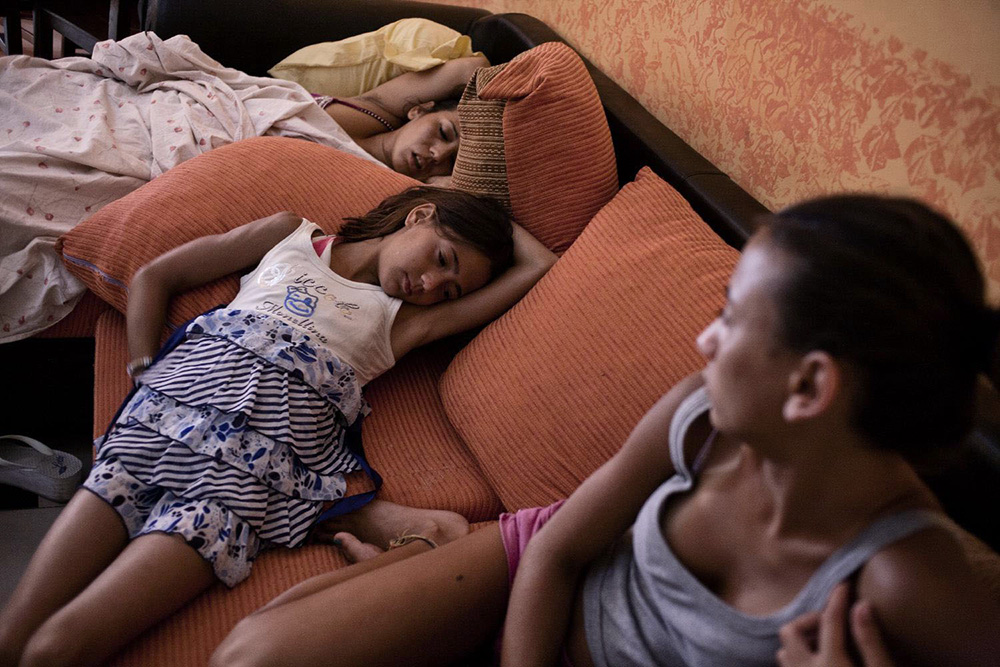
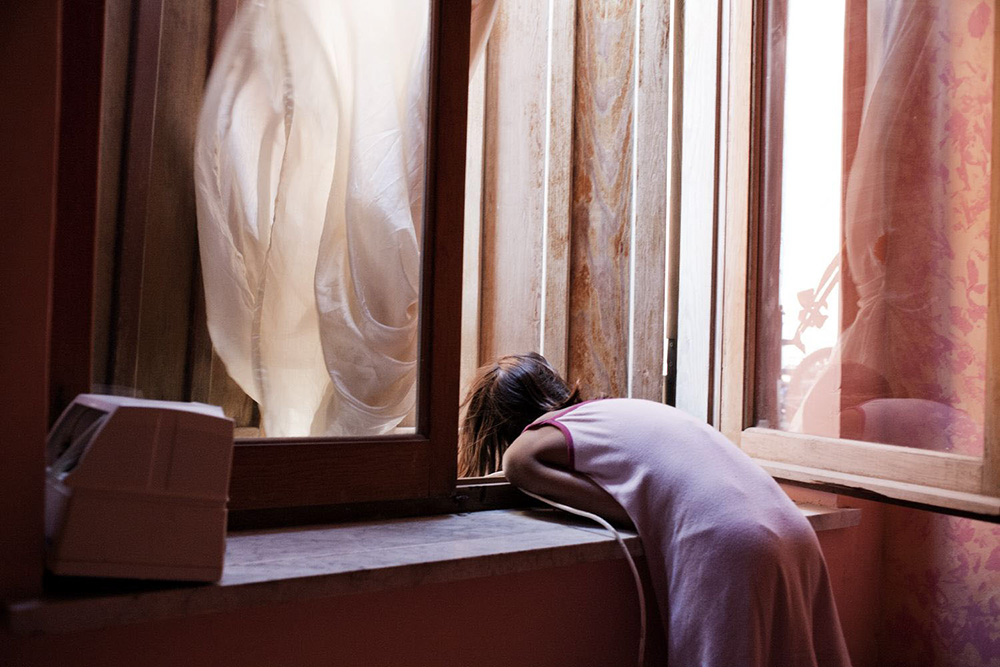
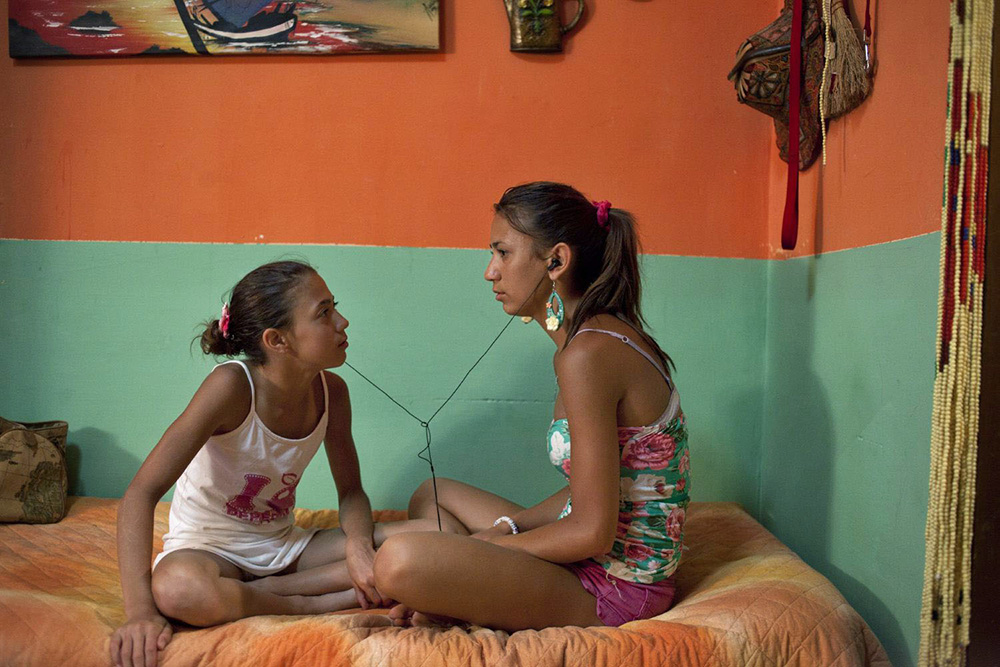
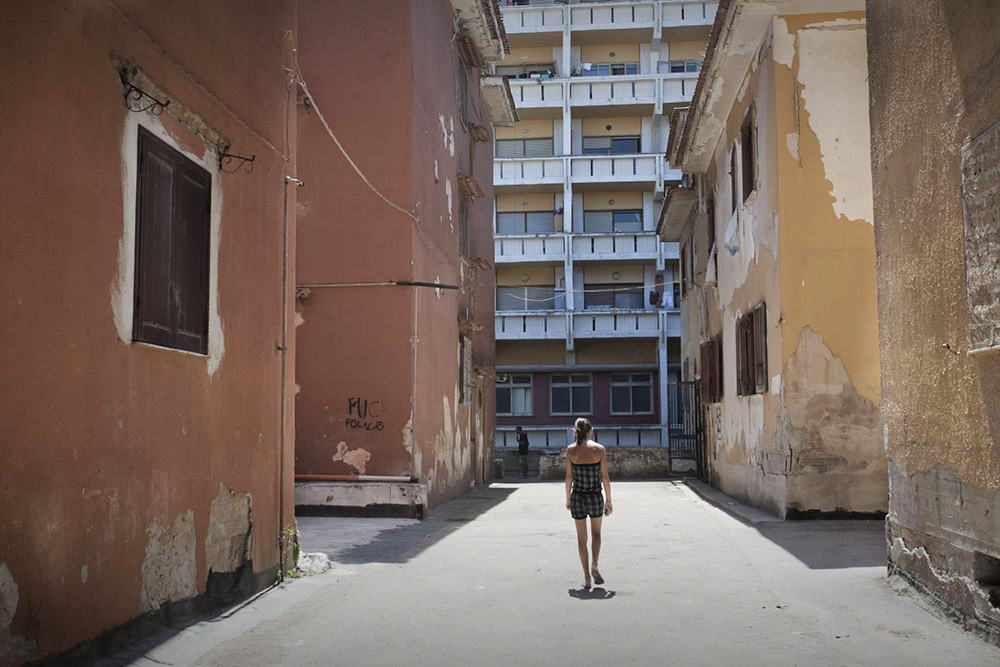
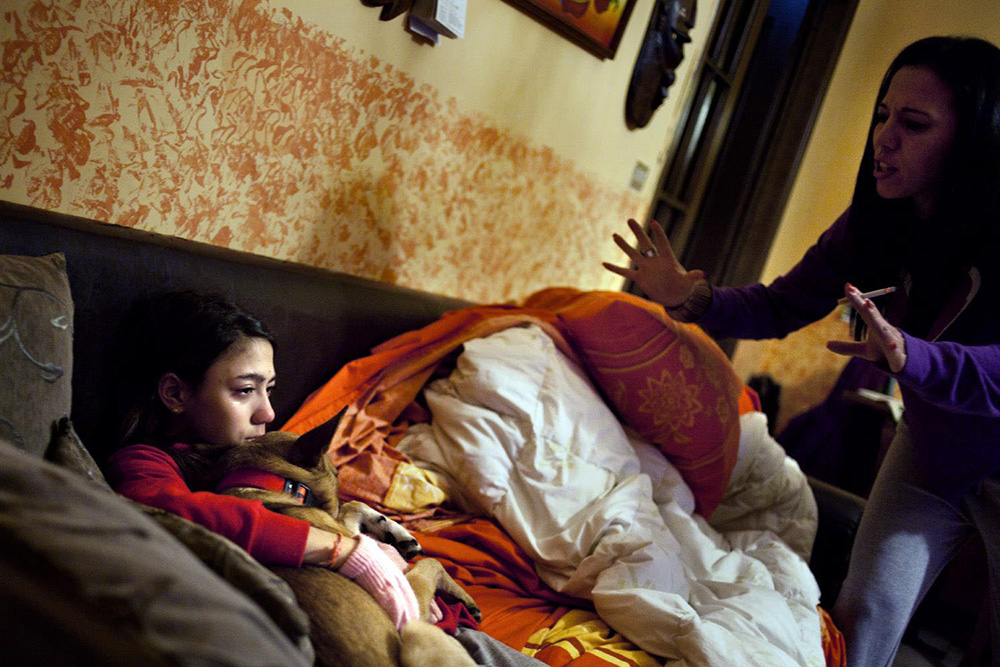
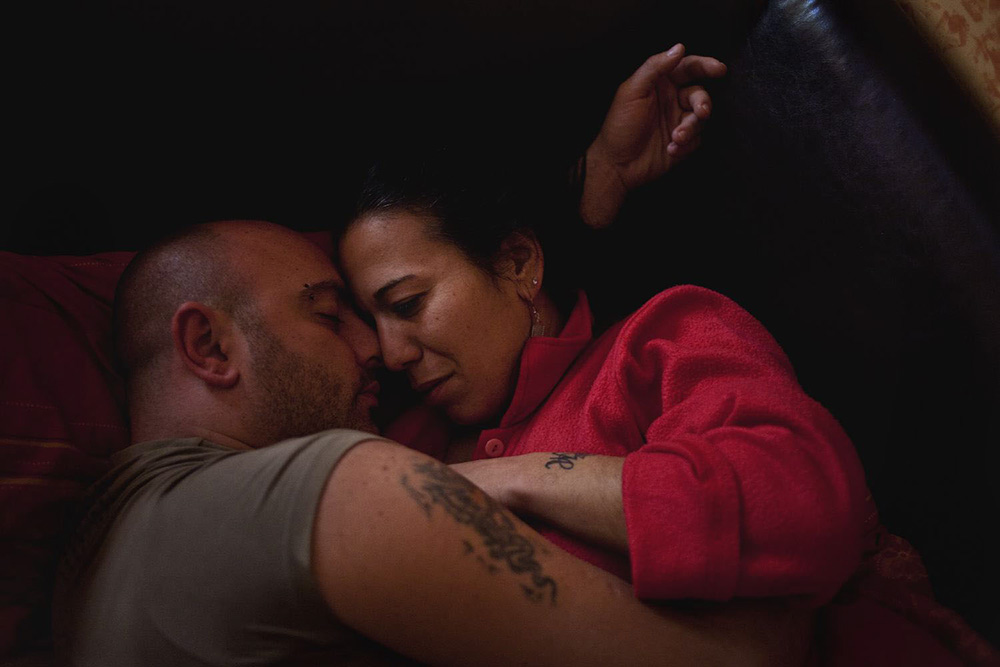
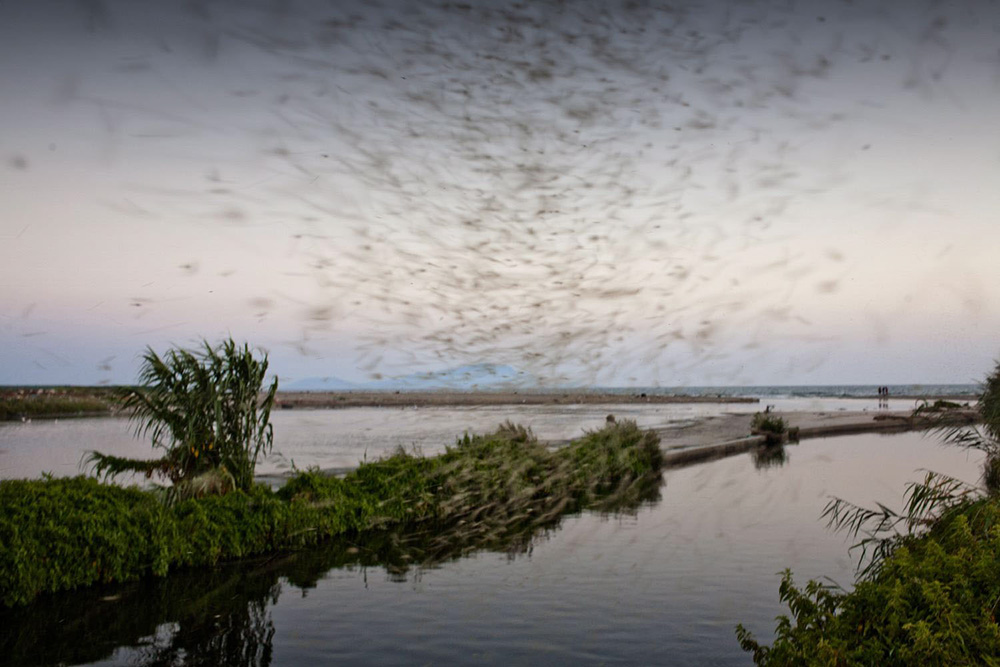
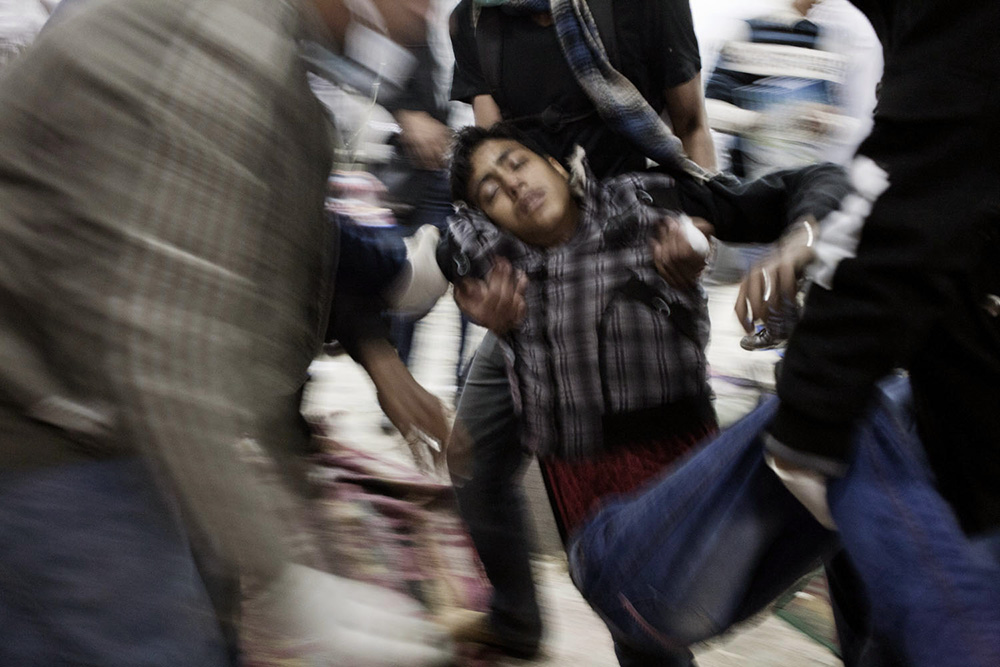
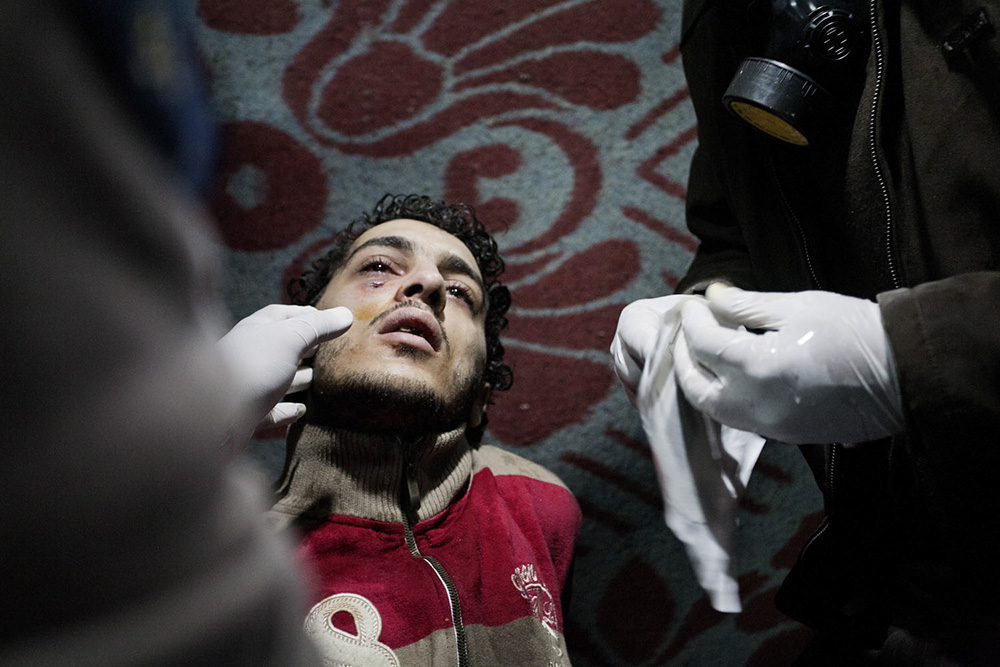
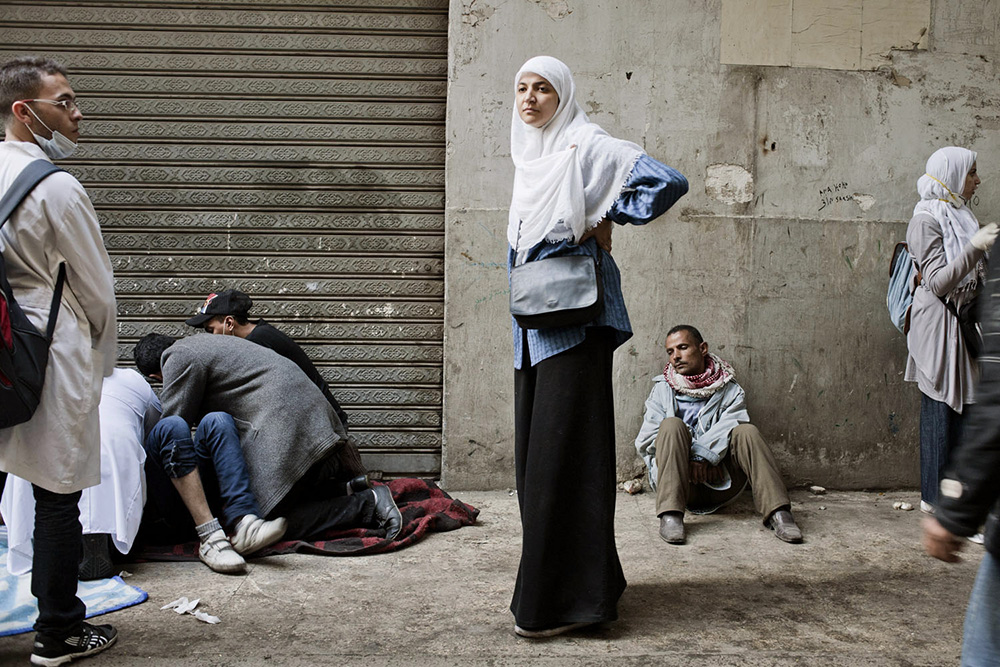

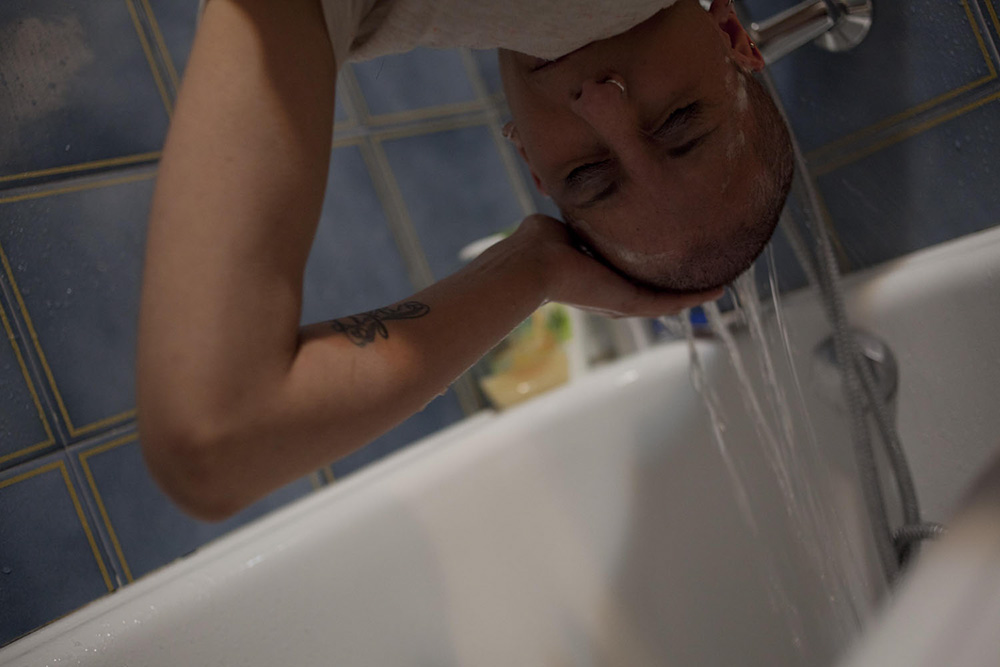
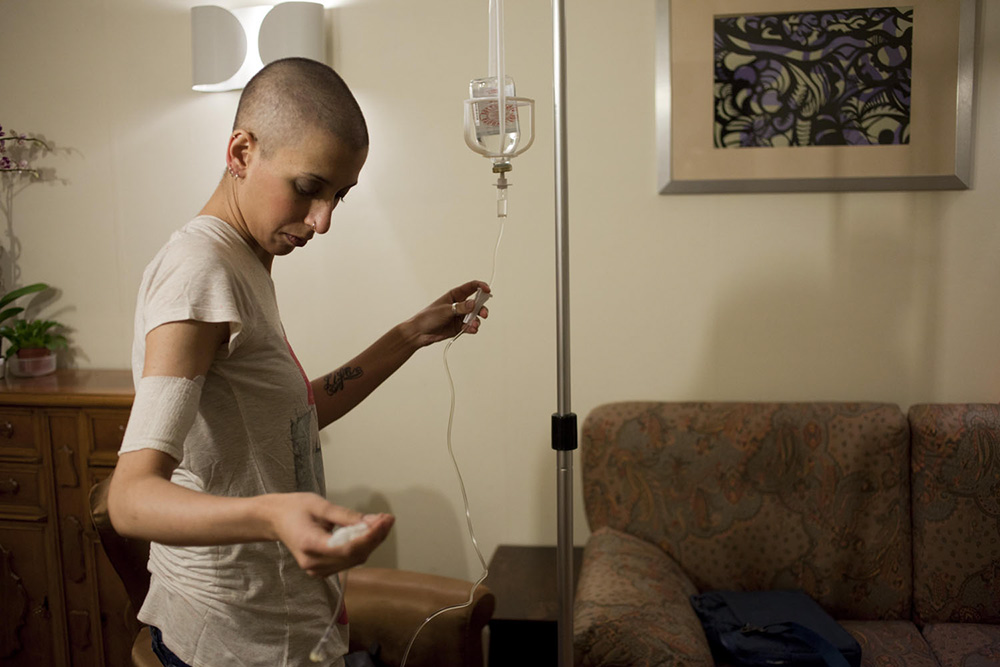
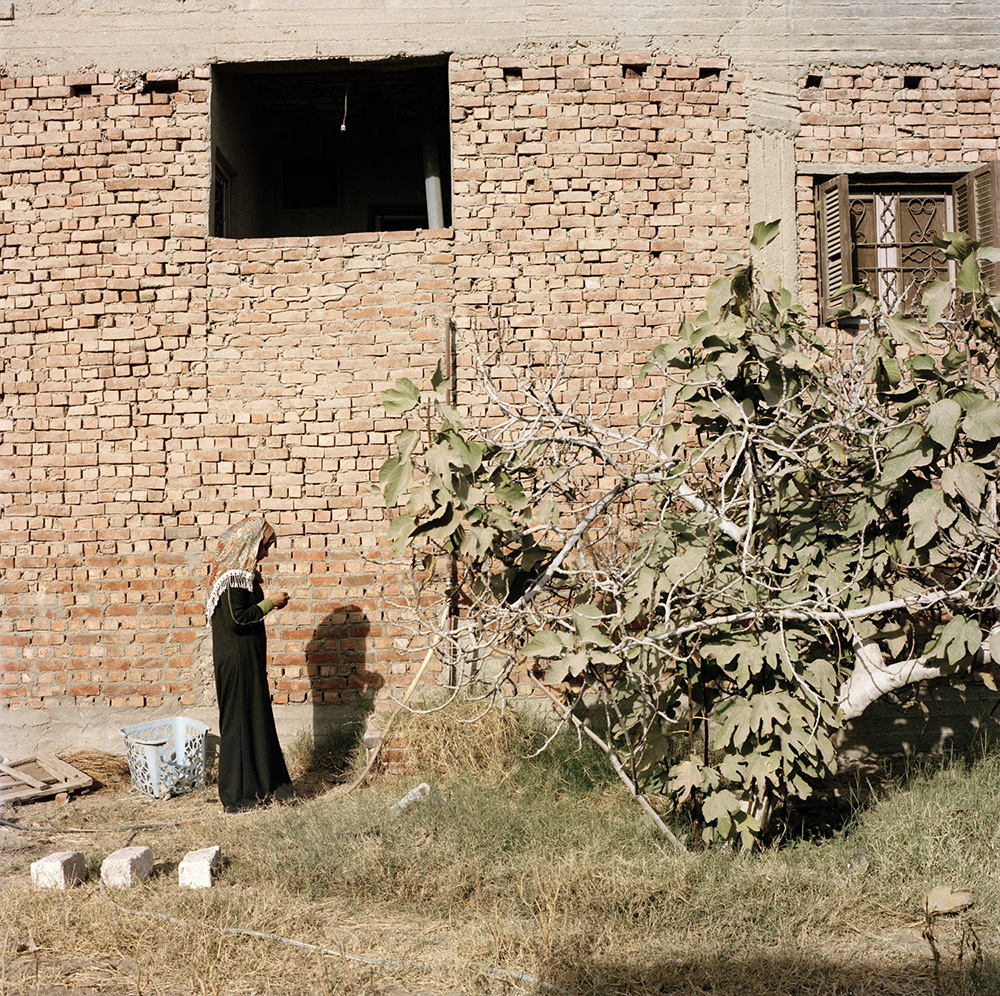
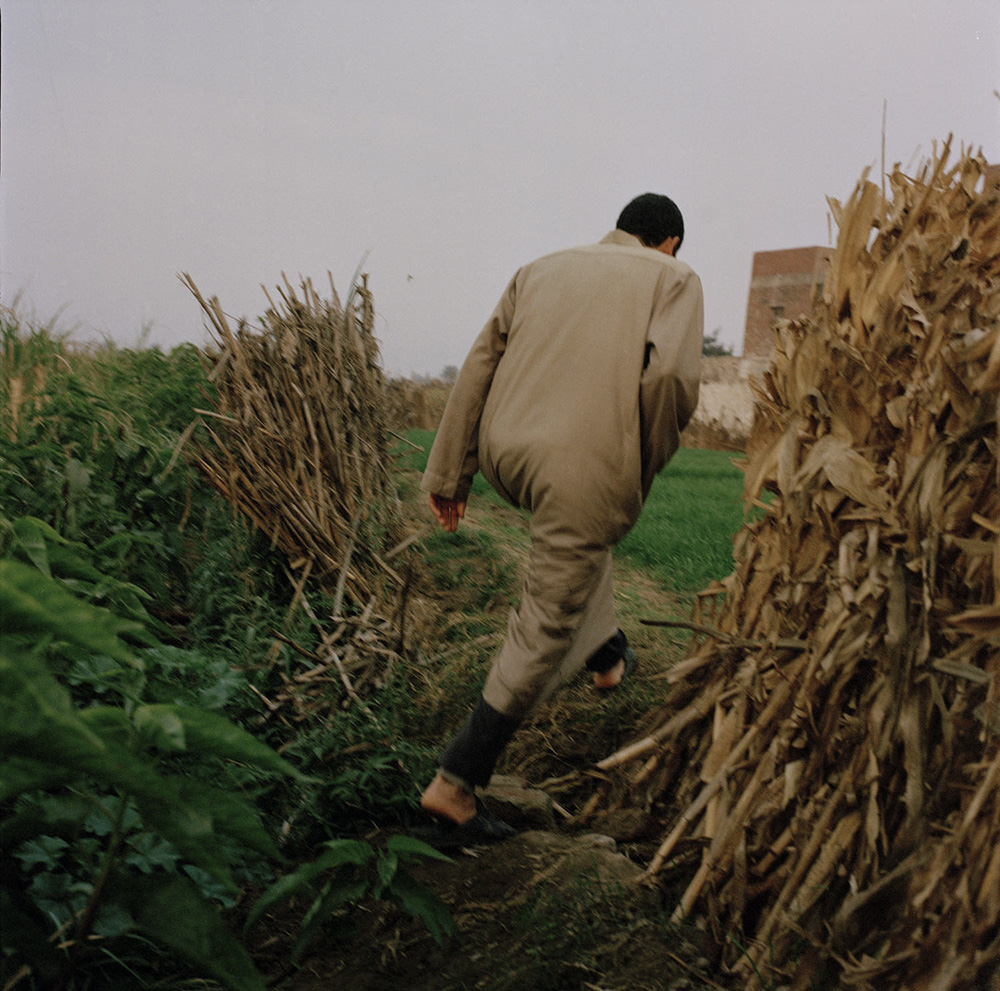
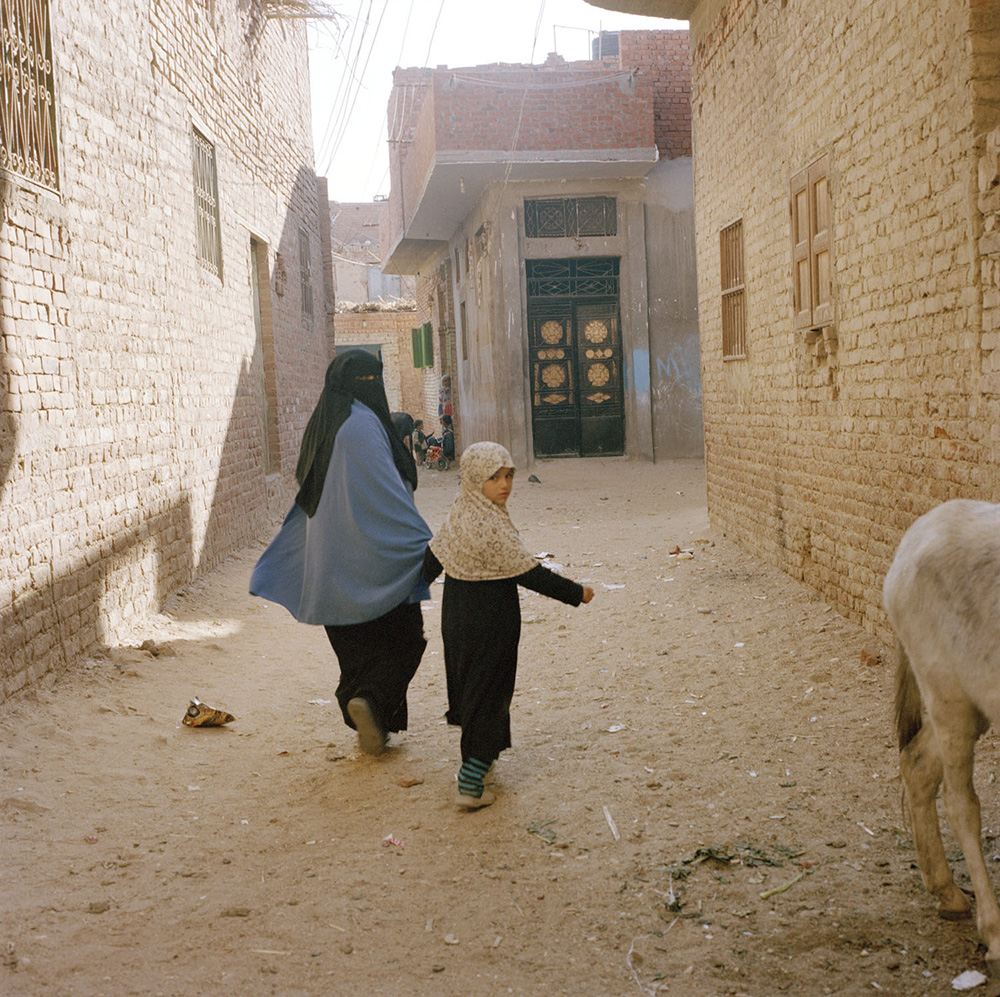


Leave a Reply